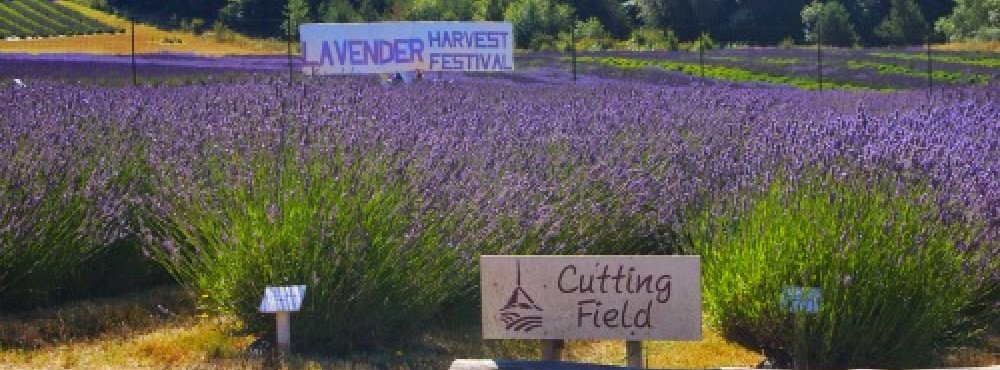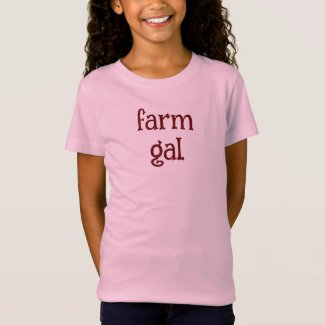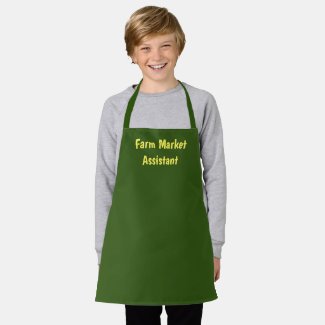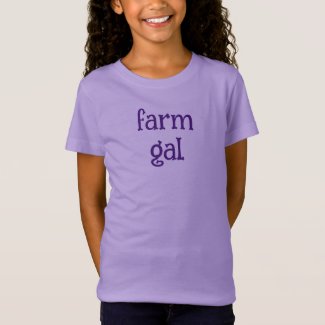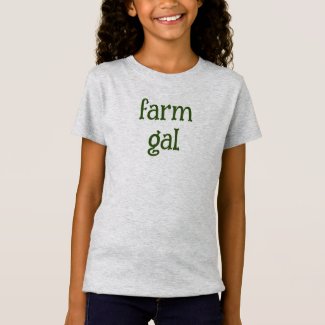Kids' agritourism on your farm
© National Lilac Publishing, LLC by Barbara Berst Adams
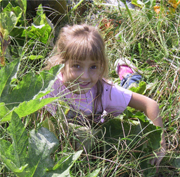
Interested in adding an agritourism segment to your farm that focuses on kids? Or expanding or tweaking a current children’s agritourism venture? Wholesome outdoor activities for kids are in high demand, especially after a pandemic that had them locked inside for months on end. I've spent a couple decades interviewing and reporting on agritourism farms, many of which were for kids. And, I had a small agritourism kids’ event on my own farm for several years. Here’s some of what I learned from my own experience, but also from so many other voices involved in children’s agritourism farming.
While the pumpkin patches, corn mazes and farm animal petting zoos are all great agritourism outdoor activities for kids, over the years I came across some far more unique kids' activities on authentic working farms. Some of those farmers have now expanded into new or additional eco-ag enterprises, or retired, but perhaps the on-farm kids’ activities they succeeded with will inspire something unique for your own farm. Please note that most of these activities sprung from the farm’s actual operation (instead of animals hauled in for a petting zoo if they weren’t really part of the farm's livestock). One of them does offer corn mazes, pumpkin patches and a fall festival, but takes them to exceptional levels.
- Home Sweet Farm in Texas had a thriving small-acreage CSA. Among their many farm activities for kids, they invited them out for ladybug releases, learning how ladybugs help organic farms. And, the kids and their families loved their summer u-pick heirloom melon patch.
- The Living Farm in Colorado raises dairy sheep. Because they will be milked by humans, dairy sheep lambs genuinely need to be handled from birth to get used to humans while young. Children were invited out to pet and hold the lambs as part of the lambs' actual spring training. This could also possibly work for a goat dairy.
- Lattin Farms in Nevada offers the more typical corn mazes, pumpkin patches, and a fall festival, but was a fifth generational family farm that just happened to have some certified teachers in the family. They created a series of farm tours working directly with the schools. Lessons included pollination, measuring, an alfalfa unit, and the various uses of certain plants. Today they continue with very clever offerings including a scarecrow factory, and their “Critterville” may even have pheasants for viewing.
- In Washington State, WoodBee Christmas Tree Farm had numerous farm attractions including a campfire for warming up, free apple cider and materials for making wreaths, but my favorite was a twist on the typical petting zoo. They put antlers on a (very willing and happy) pony and named him “Randolph, the phony baloney pony who thinks he’s a reindeer.” He became quite a legend, and children who grew up with Randolph returned years later with their own kids to visit the (new) Randolph. The farm was a great way for getting kids doing outdoor activities with their families in winter.
- On Prairie Pedlar Gardens farm in Iowa, the owner planted theme gardens including a “Kinder Garden” with a plant for every letter of the alphabet. The owner also had a program for kids aged 8-12 called Green Team where they worked in their own gardens in the morning, learning about planting, weeding, dead-heading, soil, harvesting, and so on, then broke for a snack before they enjoyed a farm-related craft.
- Owners of Terhune Orchards in New Jersey set up an outdoor classroom with seasonal farm activities for kids. For example, in spring they had a gardening program where kids dug for subterranean creatures (earthworms) and learned how valuable they are to the farm. They visited the beehives and planted a miniature garden they could take home and nurture. In summer they walked the “Farm Trail” exploring for bugs, and learned the good guys from the bad guys. Today, Terhune Orchard continues with summer kids’ camps, three-season school field trips, a “read and pick” program, and a “read and explore” program that combines listening to a story with related hands-on activities.
- Salt Creek Farm in Washington State (there’s more than one farm with this name) grew many heirloom potato varieties along with other crops. During potato harvest, they held a potato digging fest for children. The kids absolutely loved digging through the soil for potatoes. They seemed to have as much or more fun as during an Easter egg hunt.
So, here are some thoughts and tips for your own kids’ agritourism farm:
Consider starting out slow and small if this will be your first experience with guest kids on the farm
In our article on Slow Agritourism, we point out that there is a kind of social muscle that needs to time to develop when inviting guests to a farm beyond your extended family and own friends. And since every farm is different, there isn’t a cookie cutter checklist for what all farmers should do and what all farmers should avoid. Examples can be given, though, which your intuition can then apply to your own unique situation.
Let’s say you eventually want a three season agritouirism farm focusing on kids, where you advertise for children from near and far to arrive on certain dates. In spring they pick tulips and daffodils, participate in flower arranging workshops, and plant melon starts in a melon patch and pumpkins in the pumpkin patch area. In summer they harvest the heirloom melons from the melon patch, learn to make melon kabobs, and spread straw mulch in the pumpkin patch. In fall they pick pumpkins, have a hay ride, and learn to paint faces on pumpkins. You want at least 100 kids each time, each spending an average of $75 per visit. Adding $22,500 of yearly revenue.
Instead of starting out this way right out of the gate, consider starting with just a very small group of kids, a dozen or less, for only one season. Perhaps coming out one day in spring, picking flowers and learning about arranging bouquets. Then expanding gradually from there.
You’ll likely discover a university semester’s worth of information customized specifically to your children’s agritourism farm in that one season, that you can apply to expand into more kids and more seasons next year. Starting out with too many too fast can not only lead to burnout, it’s easier to handle overlooked safety issues with a dozen kids than it is when there’s a hundred running around. If one of a dozen kids gets too close to the pond, you can notice it easier, stop a disaster from happening, and find a solution for it for next year, whereas you may have been distracted elsewhere if there were a hundred you were a novice at keeping an eye on.
With a smaller group, you’ll build up your social muscle and confidence, which future larger numbers of kids will respond to once you’ve achieved that experience and confidence.
Slow and small can also be your final goal, though. No need to grow larger and larger if that works with your budget and time. There are indirect financial benefits to kids’ agritourism. Having only a one-day once a year event for a few hours can bring these benefits. Especially if you have an on-farm store or roadside stand. Your farm tours will generate more direct sales. In our case, it generated requests from the kids’ parents for us to grow other specific crops for them to buy from us the next year, and they paid us to bring our ponies to their kids’ future birthday parties.
Or, perhaps you want your children’s agritourism to be more casual, something that encourages families but no formal workshops or lessons. In this article about horses on the farm, you can read how one blueberry u-pick farmer used his one horse grazing on the perimeter of the blueberry patch to attract families to see the horse while they picked berries together. He didn’t offer rides, and his horse was simply keeping weeds from encroaching into the blueberries by mowing and trampling around its edges. This article also shares more about how a Christmas tree farm mentioned above dressed their one little Shetland pony up as a reindeer.
Start with an already formed group
Another thing to consider when starting out with a smaller number, is to open up the business at first only to kids’ groups that are already formed, such as scout groups, church groups, specific classrooms, homeschool groups, summer camp groups that take field trips, etc. This is because they already have a leader who knows them well, and have already had to operate as a unit. Plus, you market once just to them. Far different than general public advertising for 100 kids who are strangers to each other with no central leader knowing which ones are the troublemakers, which ones are the shy ones, which ones can be completely trusted and which ones have a phobia of earthworms. Even if their parents are with them, as you’ll read more about below, the parents are also all strangers to each other and they don’t know the other children. They may be expecting you to know what a long term trained teacher or camp leader knows and to take on that role immediately.
When pre-formed groups show up with their leader/teacher they’ve already bonded with, it will operate far smoother. As time goes on, you can add more groups, invite kids from the general public only for short time slots to test the waters, or otherwise build up little by little to compare and see how to best operate with more numbers.
As a bonus, you never know what may evolve that you hadn’t thought of before if you start out this way. If you begin with a couple of fifth grade classrooms, the teachers and the kids’ parents may be so impressed that the school principal requests you be their entire school’s farm, eventually allowing all their students (with teachers always being there helping) to participate. The school could apply for and receive a grant, or do school fundraisers, so their kids’ parents don’t even have to pay the fee, you would get paid what you’d expected from the general public, but instead have a guaranteed market year after year you don’t even need to advertise for. Certain teachers may work with you to come up with projects that blend well with your farm. Perfect assistants you don't even need to hire.
If you’re starting from scratch, look beyond farm stereotypes
Many farmers are already farming specific crops and want to add kids’ agritourism to blend in with what’s already being produced. They don’t grow straw, corn, pumpkins nor do they wear overalls or have a red tractor nor raise friendly farm animals waiting to be petted. I love straw, corn, pumpkins, overalls, red tractors and friendly farm animals! But that isn’t the only thing or way our food, fiber, fuel and medicinals are farmed. And some of the kids' agritourism farm examples given above reflect how those farms skipped the stereotypes and incorporated activities that reflected what their own farms were about. I always encourage agritourism that
reflects your farm. Rather than bringing in carnival type entertainment
or adding straw bales, hay rides, corn mazes, ponyride rings and pumpkins if you produce none of those crops or raise none of that type of livestock.
On our farm, we really did grow pumpkins as one of our crops, we really did grow hay so we had hay bales around, and we raised our own ponies. So those stereotypes reflected who we really were. But think about other seasons besides fall and other crops besides straw, pumpkins and corn if you don’t grow those crops already. And consider different times of year than autumn. Though being part of a network of local autumn farm destinations could benefit you with group promotion, there could also be an over supply of autumn agritourism in your area. Consider summer, such as the heirloom melon patch described above. Our article on one farm's agritourism spring festival including a May Pole that started small and gradually grew into a huge destination might give you ideas. So may our children’s gardening article.
If you really feel you want to add something additional to your kids’ agritourism business, something beyond what you produce on your farm, there are other choices besides corn mazes, pumpkins and hayrides. One farm offers local history lessons on the farm. Another offered dress-up historical re-enactments. And, workshops in folk traditions or nature activities can be fun, such as candle-making, knitting, and building birdhouses.
Don’t spoil the kids or hand out rose colored glasses as they enter your farm, but again try to make their first and early farm experiences satisfying
We don’t want to “give every kid a trophy” and we do live in a competitive world we need our kids to be confident in. Yet, community, cooperation and collaboration are also nice virtues to learn. We once offered an after school game time for kids where all games were cooperative. No winners and losers. Over time, the ideas of rooting for others and win/win seemed to set in. One parent with both kids in that program said she wanted more of that kind of thing because her son and daughter had chosen on their own to stop hitting each other over the head. A kids’ autumn festival on your farm could include a pumpkin carving workshop that ends in a jack-o-lantern museum instead of either extreme: a competition with one winner on one end, or a blue ribbon for each kid at the other end. Simply seeing them all displayed together and lit as a single glowing unit before taking them home can be remarkably satisfying.
Here’s a story along the lines of not spoiling yet being a little more protective of kids because they’re kids, and perhaps city kids at that: At a colleague’s pumpkin patch, she had her agritourism children carve their first name’s initial in the green pumpkins. Eventually they would harvest their own orange pumpkin with their initial embedded in the skin. But she also had a hidden back up pumpkin patch with each kid’s initial nearby. As she said, it would be one thing if the entire crop failed. That happens. Kids need to learn harsh lessons. But occasionally just one or two pumpkins will succumb to a pest, the neighbor’s escaped cow, or a disease where the others thrive.
And Nature doesn’t discriminate between the kids you like and the ones you don’t. The darling curious enthusiastic child whose mind and heart were opening up to nature’s systems and would be a great future farmer may have his or her pumpkin destroyed. Whereas the revolting little jerk who attempted to smash everyone’s seedlings for the joy of destruction and exclaims that poison sprays are awesome and worms are stupid – you know, the one whom you prayed would join the army and never ever set foot near a farm again as an adult – will be the one who’s pumpkin grows the healthiest and biggest. Today’s kids, our future farmers or future farm supporters, will handle future crop failures better if they have a memory within them of knowing the joy of crops that thrive and provide. They’ll be more motivated to solve the future crop failure problem and pick up and start again if they know the rewards waiting for them once they find a solution.
In that “other” pumpkin patch, there were back ups where she could say that any kids’ destroyed pumpkins “escaped to” if needed, so everyone got their initialed pumpkin. The rest of the crop in the backup patch were taken to the farmers market in hopes people with first or surnames starting with those initials would buy them (some did), and the rest fed the cows and chickens. This worked well because she had them carve only one initial into their pumpkin, rather than two initials or their first names. There were more people who wanted to buy pumpkins with only an “S” or an “R” than those who wanted both “S.R.” or “Sarah” on a pumpkin. Large wooden craft sticks with their full names near their pumpkins while they were growing helped them later know which “S” pumpkin was Sarah’s, and which was Sam’s.
Watch out for:
Inviting large numbers of kids from the general population with their parents, assuming the parents will make sure the kids behave. Above I discuss the idea of preformed groups with leaders or teachers, and in those cases perhaps parents would also come along as assistants with the leader or teacher as their centralized touchstone. But don’t assume that if kids come with their parents – a disjointed group that doesn’t know each other – that those parents qualify as adults who will make the kids behave appropriately.
A gal, I’ll call her Shelly, with a horse farm I visited and spoke with couldn’t wait to start up a local kids’ horse camp. She had a free open house in hopes of parents showing up with their kids and signing up for camp. Within moments after the arrival of a large group of people, the parents started visiting with each other, enjoying the scenery, and acted as though they forgot their kids were with them. Shelly spent the whole time chasing kids who were climbing under the fences and playing around the feet of the thoroughbreds, grabbing equipment they weren’t supposed to touch, throwing items, screaming, running off the property towards the road, all the while the parents did nothing.
I can only guess the parents were used to dropping the reins as parents when they and their kids were in the presence of a school teacher or other authority figure, but didn’t realize that authority hadn’t yet been established with Shelly, and as city folks, didn’t realize the feet of thoroughbreds aren’t the same as video games, they can actually kill someone. Shelly immediately ditched her kids’ camp idea and ended up doing one-on-one trainings with people. Had she wanted to, her single person trainings could have led to a future smaller end of the season camp for only her students once she knew each kid personally, they respected her, and she had time to explain the ropes to each individual parent.
Be careful of watching Hallmark Romance movies that involve kids if you aren’t around real kids, either your own or working or volunteering with them. You will not be taught anything remotely close to reality regarding a group of kids coming to your farm. Hallmark children are never addicted to electronics, and adore any crafts or activities the constantly cheerful adult suggests to them. They may even worship the adults around them. You might want to avoid watching Leave it to Beaver reruns, also, unless or until you have a good grip on childhood reality. Sure, those boys
were always getting into trouble. But they called adults sir and ma’am, and stood obediently when their teachers spoke to them. Many of today's children have nature deficit disorder and are in desperate need of safe outdoor activities for kids. One little girl we were giving a pony ride to was a nice little city girl. When a tiny lacewing landed on her knee, she wanted the procession to stop immediately and remove the green bug from her person. After that we could proceed. There was no concept that flying insects were in constant attendance and if one was removed, there were more on the way. Nor was there any understanding that the lacewing was fascinating, harmless, and of no danger as compared to a large wasp or horse fly. To her credit, she was polite, and eventually adapted to this outdoor activity where kids and bugs were part of the same realm.
Practice first...
Your own kids grew up on the farm and have an inherent sense about it. Perhaps their neighboring rural friends have also been quite trustworthy. And back in the late 19th century when almost half the country grew up on farms, it didn’t seem possible that future children could not know that there is no e-device switch that can be turned off to stop a bull from charging them. Many kids don’t even have pets or have to water their lawns. The idea that something living will respond back to their actions in an unpredictable and uncontrollable manner doesn’t yet exist for them. They don’t know how to “read” another’s signals. They just know how to turn the device on, utilize a one-way control from them to it, then turn it off. And, if they do play outside in parks or on school playgrounds, the playgrounds are built to where everything that exists there is for their pleasure. Your tractor may look like an interesting playground climbing toy. Your raised beds sprouting your CSA crops may look like a fun sandbox. Your farm pond might look like a great place to toss their garbage into.
You may be surprised at how what is safe for and obvious to rural-raised kids can turn into hazards when other children show up. Brainstorm with others who don’t live on your farm about safety issues that might not be obvious to you. Consider inviting just one or two non-farming kids (no charge, just a visit) with their parents you explain the situation to (parents you can trust who will discipline their kids), to see how they respond to the farm. Take note of whether they seemed tempted to climb the barbed wire fence, play with rusty tools, or throw rocks at the ducks. Find solutions to these issues before actually having kids on the farm for a fee.
Even if you don’t plan to start slowly as described above, non-paying practice with one or two kids unfamiliar with your farm can really pay off in the end. But once again, starting slow and small with your actual agritourism enterprise can also help with this issue. In some cases, though, (ask your attorney or agent), liability issues may be treated differently when there’s simply a guest on your farm vs. solicited paying customers.
Don’t skimp on liability protection
Although
you may have home business insurance and/or farm business insurance, a
special insurance rider specifically for agritourism may be advised by
your attorney and/or agent to cover damages to your property and cover
liability for farm customers entering your farm. With luck, there could
even be an agritourism immunity law in your state that shields you from
liability for specific activities when certain qualifications are met.
But not all states offer these and they're not for every single thing
that could happen on your farm, so look closely at what's available in
your state.
See also our articles on how farmers find ways to fully protect and insure their farm businesses with sometimes very low (or even free) yearly insurance costs:
Other suggestions:
- Have a rain back up plan
- Over plan for added activities for when the regularly planned activities go quicker than anticipated
- Keep updating as the years go on, dropping what no longer works and expanding on what does.
- Cooperate with other established entities not already mentioned above, such as your local 4-H groups or your town’s Parks & Recreation if they have one, which may advertise for you or connect you with day camps that may be interested.
- See if your agriculture extension already has classroom agriculture materials you could use for free or low-cost (and they may also advertise for you.)
Finally, do remember, amidst “today’s kids” there are gems waiting to be the next generation of farmers, gardeners or at least farmer-supporting adult citizens. Even within the more irritating kids there could be buried gems inside them that just might come out and blossom on the farm. Don’t feel you have to save them all. Opening the mind of even one child is a bonus to the world. With all the challenges a kids’ agritourism business must overcome, there are thousands of them across the country and world that are operating safely, prosperously, overcoming occasional issues, and succeeding year after year. Thank you for potentially being one of them!
-------
Our Facebook Agritourism page occasionally posts stories, ideas and examples of agritourism farms including those that offer kids' activities. And, you may also be interested in the book, The New Agritourism: Hosting Community & Tourists on Your Farm.

